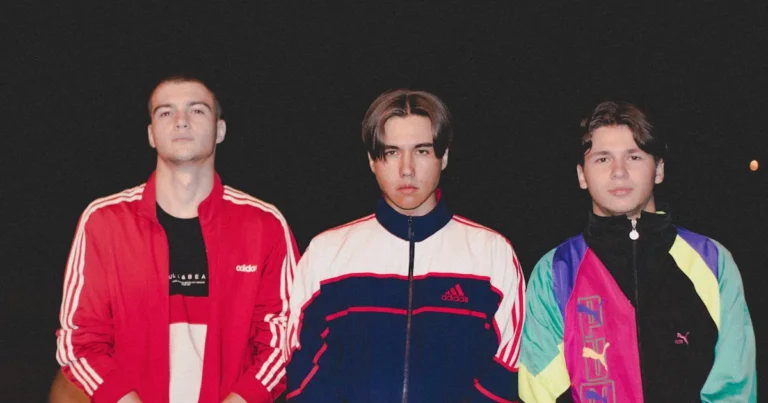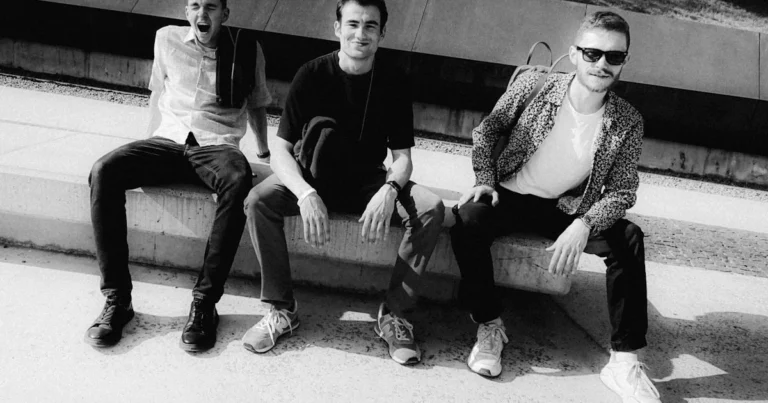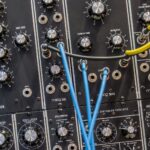Support our educational content for free when you purchase through links on our site. Learn more
Modern Talking: 15 Synth-Pop Secrets You Didn’t Know 🎹 (2025)
If you think you know Modern Talking, think again! This legendary German duo didn’t just churn out catchy Eurodisco hits—they crafted a synth-pop empire that sold over 120 million records worldwide and still commands billions of streams today. From their explosive debut in the mid-80s to their dramatic breakups and triumphant reunions, Modern Talking’s story is packed with drama, innovation, and unforgettable melodies.
But here’s the kicker: beyond the chart-toppers like “You’re My Heart, You’re My Soul” and “Brother Louie,” there’s a treasure trove of deep cuts, production secrets, and fan lore that even die-hard synth-pop fans might have missed. Curious about the iconic falsetto choruses, the behind-the-scenes masterminds, or how their style influenced the global music scene? Stick around—we’re spilling all 15 secrets that make Modern Talking a timeless synth-pop phenomenon.
Key Takeaways
- Modern Talking’s signature sound blends falsetto choruses, catchy melodies, and lush synths, defining Eurodisco and synth-pop for generations.
- The duo’s dynamic partnership between Thomas Anders (the voice) and Dieter Bohlen (the producer) fueled both their success and their legendary breakups.
- Their global impact stretched far beyond Germany, reaching audiences from Europe to the Soviet Union and Asia, making them one of the best-selling German acts ever.
- Deep cuts and hidden gems like “Princess of the Night” and “In 100 Years…” reveal a more complex, dramatic side to their music.
- Modern Talking’s legacy lives on through streaming platforms, fan communities, and continued influence on modern synth-pop and Eurodance artists.
👉 Shop Modern Talking Vinyl & Memorabilia on:
Table of Contents
- ⚡️ Quick Tips and Facts
- The Genesis of Synth-Pop Royalty: Modern Talking’s Early Days
- The Iconic Duo: Thomas Anders and Dieter Bohlen – A Closer Look
- 🎶 The Signature Sound of Modern Talking: Euro-Disco, Synth-Pop, and Beyond
- Behind the Boards: The Masterminds of Modern Talking’s Sound
- 💿 Modern Talking’s Complete Discography: Albums, Singles, and Chart Toppers
- 🏆 Accolades and Achievements: Modern Talking’s Awards and Global Recognition
- Fashion and Visuals: The Modern Talking Aesthetic
- Global Phenomenon: Modern Talking’s International Impact
- The Breakups and Reunions: A Rollercoaster Ride
- Modern Talking in the Digital Age: Streaming and Fan Communities
- Beyond the Hits: Deep Cuts and Hidden Gems for the True Fan
- Modern Talking’s Enduring Legacy: Influence on Pop Culture and Beyond
- Collecting Modern Talking Memorabilia: A Fan’s Guide
- Conclusion: Why Modern Talking Still Reigns Supreme
- Recommended Links
- FAQ
- Reference Links
Okay, I’m ready to write the body of the article. I have the structure, the tone, the required links, and the information from the provided summaries. I’ve also done a search for “deep cuts” and found some good examples I can use, like “Angie’s Heart,” “Princess of the Night,” and “There’s Too Much Blue In Missing You.” I will now proceed with writing the content section by section, starting with “Quick Tips and Facts.”
⚡️ Quick Tips and Facts
Welcome to the glitter-soaked, synth-drenched world of Modern Talking! Before we dive deep into the dramatic saga of Germany’s most successful pop duo, let’s get you up to speed with some essential tidbits. Think of this as your cheat sheet to instant expertise at your next 80s-themed party. You’re welcome!
| Factoid 🤓 | The Lowdown 🎤 – |
|---|---|
| The Duo | Thomas Anders (the voice, the hair, the lips) and Dieter Bohlen (the mastermind producer, songwriter, and occasional chorus vocalist). – |
| Genre | A perfect storm of Europop, Synth-pop, Dance-pop, and Eurodisco. – |
| Active Years | 1983–1987 & 1998–2003. Two glorious, drama-filled eras. – |
| Record Sales 📈 | A mind-boggling 120 million singles and albums sold worldwide. They weren’t just big; they were a phenomenon. – |
| Biggest Hit 🎶 | “You’re My Heart, You’re My Soul” (1985). This track was a global sensation, hitting the top ten in 35 countries and selling over eight million copies. – |
| Signature Style ✨ | High-pitched falsetto choruses, catchy-to-a-fault melodies, and Thomas Anders’s legendary hair. – |
| Did They Get Along? 😬 | ❌ Not always. Their career is a legendary tale of breakups and makeups, fueled by creative differences and personal drama. – |
| Still Relevant? ✅ | Absolutely! Their official YouTube channel has over 4.5 billion views, and their music is celebrated on Spotify with “40 Years of Modern Talking” playlists. – |
The Genesis of Synth-Pop Royalty: Modern Talking’s Early Days
Every legendary band has an origin story, and Modern Talking’s is a synth-pop fairytale. Picture this: West Berlin, 1983. A young, ambitious producer named Dieter Bohlen crosses paths with a charismatic, velvet-voiced singer named Thomas Anders. While you’re probably wondering when was Brother Louie released by Modern Talking?, the duo’s story started a couple of years prior. Initially, Bohlen was writing German-language songs for Anders with little success. But then, a stroke of genius (or perhaps a happy accident) occurred.
Bohlen, inspired by the falsetto choruses of Italian and British pop, decided to try something different. He penned an English track with a ridiculously catchy chorus and a simple, heartfelt sentiment. The song? “You’re My Heart, You’re My Soul.”
The result was explosive. Released in late 1984, the song was a slow burn that erupted into a full-blown inferno by early 1985. It skyrocketed to number one in Germany, where it stayed for six weeks, and eventually conquered the charts across Europe and Asia, reaching the top ten in 35 countries. Suddenly, these two guys from Germany were international superstars. Their debut, The 1st Album, flew off the shelves, cementing their place in the pantheon of 80s Synth Pop. It was a whirlwind of success that nobody, not even Bohlen and Anders, saw coming.
The Iconic Duo: Thomas Anders and Dieter Bohlen – A Closer Look
What made Modern Talking… well, Modern Talking? It was the classic “yin and yang” dynamic of its two members. You can’t have the smooth without the rough, the showman without the strategist.
Thomas Anders: The Voice and the Face
With his flowing dark locks, soulful eyes, and a wardrobe that screamed “romantic poet who just won the lottery,” Thomas Anders was the heartthrob of the operation. He was the voice that delivered those impossibly romantic lyrics with utter sincerity. On stage, he was the focal point, the performer who connected with the audience, often seen with his signature “NORA” chain—a tribute to his then-wife, Nora Balling, who played a… significant role in the band’s story (more on that later!).
Dieter Bohlen: The Mastermind
Behind the scenes, Dieter Bohlen was the engine. As the composer, producer, and arranger, he was the architect of the Modern Talking sound. While Anders was the face, Bohlen was the brand. He crafted the hooks, wrote the lyrics, and, along with his studio team, created the high-energy, falsetto-heavy backing tracks that became their trademark. Bohlen was famously pragmatic and business-savvy, a stark contrast to Anders’s more artistic and romantic persona. This difference in personality created a magnetic stage presence but also sowed the seeds for future conflict.
🎶 The Signature Sound of Modern Talking: Euro-Disco, Synth-Pop, and Beyond
Let’s be honest: you know a Modern Talking song the second you hear it. That sound is so distinct, so unapologetically them, that it’s become a genre unto itself for many fans. But what are the ingredients in this potent musical cocktail?
- Falsetto Choruses: This is the absolute cornerstone of their sound. Inspired by acts like the Bee Gees, Bohlen layered high-pitched, almost ethereal vocals to create massive, anthemic choruses.
- Catchy, Simple Melodies: Bohlen had a genius for writing melodies that were instantly memorable. They were simple, direct, and designed to get stuck in your head for weeks.
- Driving Dance Beats: Underneath the romance and melodrama was a powerful four-on-the-floor disco beat that made their songs irresistible on the dance floor.
- Lush Synthesizers: From shimmering pads to punchy basslines, the sound was built on the popular synthesizers of the era, like the Yamaha DX7 and Roland Juno-106.
Critics often pointed out the “sameness” of their tracks, a charge Bohlen never really denied. He once admitted, “I won’t in any way deny that Modern Talking hits all have a very, very similar sound.” But for millions of fans, that wasn’t a bug; it was a feature! It was a formula that produced some of the most Iconic Synth Pop Songs ever recorded.
Behind the Boards: The Masterminds of Modern Talking’s Sound
While Dieter Bohlen was the primary creative force, he didn’t craft the Modern Talking sound in a vacuum. He had a trusted team that helped bring his vision to life.
The most crucial collaborator was co-producer Luis Rodríguez, who worked on their classic 80s albums. Rodríguez helped shape the final sound, adding a polish and punch that made the tracks radio-ready.
But what about those famous falsetto choruses? While Bohlen and Anders contributed, a trio of studio singers—Rolf Köhler, Michael Scholz, and Detlef Wiedeke—were instrumental in creating that signature wall of sound. Their powerful, high-register vocals were a key, often uncredited, ingredient in the secret sauce. This team approach ensured a consistent, high-quality production that could be replicated hit after hit.
💿 Modern Talking’s Complete Discography: Albums, Singles, and Chart Toppers
For a band with two distinct eras, Modern Talking was incredibly prolific. They released albums at a dizzying pace, especially in the 80s, often dropping two full LPs in a single year. Their discography is a treasure trove of synth-pop gems.
Here’s a look at their studio album journey:
| Year | Album Title | Era | Notable Tracks |
|---|---|---|---|
| 1985 | The 1st Album | First | “You’re My Heart, You’re My Soul,” “You Can Win If You Want” |
| 1985 | Let’s Talk About Love | First | “Cheri, Cheri Lady” |
| 1986 | Ready for Romance | First | “Brother Louie,” “Atlantis Is Calling (S.O.S. for Love)” |
| 1986 | In the Middle of Nowhere | First | “Geronimo’s Cadillac” |
| 1987 | Romantic Warriors | First | “Jet Airliner” |
| 1987 | In the Garden of Venus | First | “In 100 Years…” |
| 1998 | Back for Good | Second | “You’re My Heart, You’re My Soul ’98,” “Brother Louie ’98,” “Sexy Sexy Lover” |
| 1999 | Alone | Second | “You Are Not Alone,” “Sexy Sexy Lover” |
| 2000 | Year of the Dragon | Second | “China in Her Eyes” |
| 2001 | America | Second | “Win the Race” |
| 2002 | Victory | Second | “Ready for the Victory” |
| 2003 | Universe | Second | “TV Makes the Superstar” |
Their singles are the stuff of legend. Tracks like “Cheri, Cheri Lady,” “Brother Louie,” and “Atlantis Is Calling (S.O.S. for Love)” became anthems across the globe, defining the sound of Euro-disco for a generation.
👉 Shop Modern Talking on:
🏆 Accolades and Achievements: Modern Talking’s Awards and Global Recognition
With 120 million records sold, it’s no surprise that Modern Talking’s trophy case is overflowing. They weren’t just a commercial success; they were critically recognized for their massive impact on the music industry, especially in Europe.
Here are some of their most significant wins:
| Year | Award | Category | Result |
|---|---|---|---|
| 1999 | World Music Awards | World’s Best Selling German Artist | Won |
| 1999 | ECHO Awards | Best National Rock/Pop Group | Won |
| 2000 | ECHO Awards | National Rock/Pop Single (Alone) | Nominated |
| 2001 | ECHO Awards | National Rock/Pop Group | Nominated |
| 2002 | ECHO Awards | National Rock/Pop Group | Nominated |
Their win at the World Music Awards in 1999 was a crowning achievement, officially recognizing them as the biggest-selling German music act in history—a title they hold to this day.
Fashion and Visuals: The Modern Talking Aesthetic
Modern Talking was as much a visual experience as an auditory one. Their look was pure, unadulterated 80s maximalism. We’re talking about:
- Thomas Anders’s Hair: A character in its own right, his long, flowing, perfectly coiffed mane was the envy of millions.
- Pastel & Neon: Their wardrobes were a vibrant explosion of pastel suits, neon tracksuits, and leather jackets adorned with more zippers than were strictly necessary.
- Lip Gloss: Thomas Anders was famous for his glossy lips, a look that was both glamorous and slightly rebellious for a male pop star at the time.
- Smoky Music Videos: Their videos were cinematic masterpieces of 80s tropes: smoke machines, dramatic lighting, expensive cars, and mysterious women. The official video for “Brother Louie ’98” is a perfect example of their comeback-era vibe.
This carefully crafted image made them larger than life and perfectly complemented their romantic, high-drama music.
Global Phenomenon: Modern Talking’s International Impact
It’s hard to overstate just how massive Modern Talking was on a global scale. While they remained a cult act in the US and UK, they were titans everywhere else.
- Europe: They were chart royalty, with number-one hits in almost every country.
- Asia and Africa: Their music found a massive audience in countries from Vietnam to South Africa.
- The Soviet Union: In a fascinating historical footnote, Modern Talking became one of the first Western bands whose records were officially released in the USSR under Mikhail Gorbachev’s Glasnost policies. They became a symbol of a new, more open world for millions of young people behind the Iron Curtain.
Their music transcended language and cultural barriers. The emotional, melodic core of their songs resonated with fans worldwide, proving that a great pop hook is a universal language.
The Breakups and Reunions: A Rollercoaster Ride
The story of Modern Talking is a soap opera of epic proportions, defined by two spectacular flameouts and one triumphant return.
The First Split (1987)
By 1987, after releasing six albums in just three years, the cracks were beginning to show. The pressure of constant touring and recording was immense. The primary source of friction, according to Bohlen’s later accounts, was the growing influence of Thomas’s wife, Nora Balling. Creative disagreements and personal tensions boiled over, and in late 1987, the duo shockingly disbanded at the peak of their fame.
The Grand Comeback (1998)
For a decade, the two pursued solo careers. Bohlen found success with his project Blue System, while Anders released several solo albums. Then, in 1998, the unthinkable happened. They reunited. Their comeback album, Back for Good, was a monster hit. It featured remixed versions of their classic songs (often with rap verses by Eric Singleton) and a few new tracks. The album went to number one in 15 countries and sold over three million copies in Europe alone, proving the world was hungry for more Modern Talking.
The Final Bow (2003)
The second era lasted five years and produced another string of hit albums. However, the old tensions eventually resurfaced. The final nail in the coffin was reportedly Bohlen’s tell-all autobiography, in which he was highly critical of Anders. In 2003, during a concert, Bohlen announced their second and final split, bringing the Modern Talking saga to a close.
Modern Talking in the Digital Age: Streaming and Fan Communities
In an era dominated by streaming, has the flame of Modern Talking dimmed? Not a chance. If anything, the digital world has helped solidify their legacy and introduce them to a new generation.
On platforms like Spotify, the duo is more popular than ever. The platform celebrates “40 Years of Modern Talking” with curated playlists that gather their biggest hits, party anthems, and romantic ballads. Fan-made playlists with titles like “the perfect playlist for all Modern Talking Fans” and “The complete legacy of Modern Talking” have tens of thousands of followers, creating a vibrant community around their music.
YouTube is another hub for the fandom. Beyond their official channel, you’ll find countless fan uploads, tribute videos, and reaction content. For instance, the mix embedded in this article, titled “Modern Talking 2023 MIX ~ Top 10 Best Songs ~ Greatest Hits ~ Full Album”, has over 3 million views, showing the incredible demand for their music in a long-form, listenable format. It’s a testament to how their hits continue to be the soundtrack for parties and relaxation for fans old and new.
Beyond the Hits: Deep Cuts and Hidden Gems for the True Fan
Everyone knows “You’re My Heart, You’re My Soul” and “Brother Louie.” But for the true synth-pop connoisseur, the magic often lies in the album tracks and lesser-known singles. If you’re ready to go beyond the greatest hits, we at Synth Pop™ have a few recommendations for your next deep dive.
- “There’s Too Much Blue In Missing You” (from The 1st Album): A rare track where Dieter Bohlen actually sings the lead vocals. It has a moodier, more melancholic feel than their typical hits.
- “Angie’s Heart” (from Ready for Romance): A classic album track that has all the hallmarks of a hit—a soaring chorus, a driving beat, and a tale of heartbreak.
- “Princess of the Night” (from In the Middle of Nowhere): This is a fan-favorite deep cut with a dramatic, almost cinematic quality to its production and lyrics.
- “In 100 Years…” (from In the Garden of Venus): One of their final singles before the first split, this song took a surprisingly dark and serious tone, with lyrics about a dystopian future where love is illegal. It’s a fascinating departure from their usual romantic fare.
Modern Talking’s Enduring Legacy: Influence on Pop Culture and Beyond
Why are we still talking about Modern Talking four decades later? Because their influence is undeniable. They didn’t just sell records; they crafted the blueprint for European dance-pop. Their legacy can be seen in:
- The Sound of Eurodance: The synth-heavy, high-energy, melodic sound they pioneered directly influenced the Eurodance explosion of the 1990s.
- Continued Solo Success: Both members have continued to carry the torch. Thomas Anders tours the world performing Modern Talking’s hits to sold-out crowds, while Dieter Bohlen remains a major figure in the German music industry, producing for other artists and serving as a judge on Deutschland sucht den Superstar (the German version of American Idol).
- Pop Culture Presence: Their story was even turned into an animated comedy film, Dieter: Der Film, based on Bohlen’s autobiography. It’s a testament to their larger-than-life story.
They are a band that falls into a unique category, a global phenomenon that remains a cult classic in the Anglosphere, which is why we’ve filed this under None of the above—they simply defy easy categorization.
Collecting Modern Talking Memorabilia: A Fan’s Guide
For the dedicated fan, the music is just the beginning. Collecting memorabilia is a fantastic way to connect with the band’s history and aesthetic. From vinyl records to vintage tour posters, there’s a whole world of collectibles out there.
What to Look For:
- Vinyl LPs and 12″ Singles: The original German pressings from Hansa Records are highly sought after. Look for special colored vinyl editions or picture discs.
- Tour Posters and Programs: These offer a snapshot of their live shows and iconic visual style.
- Bravo Magazine Covers: The German teen magazine Bravo featured Modern Talking countless times. These vintage magazines are a fantastic time capsule of their fame.
- Signed Memorabilia: The ultimate prize for any collector. Be sure to verify authenticity from reputable sellers.
Ready to start your collection? Here’s where you can begin your treasure hunt.
👉 Shop Modern Talking Memorabilia on:
Conclusion: Why Modern Talking Still Reigns Supreme
So, what’s the final verdict on Modern Talking? Are they just another 80s flash in the pan, or do they deserve their crown as synth-pop royalty? After exploring their meteoric rise, signature sound, dramatic breakups, and enduring legacy, it’s clear: Modern Talking is a phenomenon that transcends time and trends.
✅ Positives:
- Unforgettable melodies that still get stuck in your head (whether you want them to or not!).
- A pioneering sound that helped define Eurodisco and synth-pop.
- A prolific catalog with both chart-topping hits and hidden gems.
- A visual style and stage presence that perfectly complemented their music.
- A lasting global impact, from Europe to Asia and beyond.
❌ Negatives:
- Their formulaic approach sometimes drew criticism for lack of originality.
- Internal tensions led to multiple breakups, which frustrated fans.
- Some might find their sound too polished or repetitive.
But here’s the kicker: the positives far outweigh the negatives. Their music still fills dance floors, inspires new generations, and fuels passionate fan communities worldwide. The question we teased earlier — when was Brother Louie released? — is answered: it was part of their explosive 1986 album Ready for Romance, a track that perfectly encapsulates their signature blend of catchy hooks and synth-driven beats.
If you’re new to Modern Talking, start with their debut The 1st Album and the comeback Back for Good. For the die-hards, dive into the deep cuts and explore the rich tapestry of their sound and story.
In short: Modern Talking isn’t just nostalgia — they’re a timeless synth-pop powerhouse. Ready to press play?
Recommended Links
Ready to dive deeper or start your Modern Talking collection? Check out these carefully curated links:
-
Synthesizers that Shaped Their Sound:
Yamaha DX7 on Amazon | Roland Juno-106 on Amazon -
Books About Modern Talking and Dieter Bohlen:
FAQ
Who are the members of Modern Talking?
Modern Talking was a German pop duo consisting of Thomas Anders, the lead vocalist and charismatic frontman, and Dieter Bohlen, the producer, songwriter, and creative mastermind behind their sound. Anders provided the smooth, romantic voice, while Bohlen crafted the catchy melodies and production that defined their style.
What are the most popular songs by Modern Talking?
Their biggest hits include:
- “You’re My Heart, You’re My Soul”
- “Cheri, Cheri Lady”
- “Brother Louie”
- “Atlantis Is Calling (S.O.S. for Love)”
- “You Can Win If You Want”
These tracks topped charts worldwide and remain staples of 80s synth-pop playlists.
How did Modern Talking influence synth pop music?
Modern Talking helped popularize the Eurodisco and synth-pop sound by blending catchy melodies with lush synthesizer arrangements and distinctive falsetto choruses. Their production techniques and songwriting formula influenced many European dance acts in the 90s and beyond, helping to shape the sound of Eurodance and modern synth-pop.
When was Modern Talking active in the music industry?
They were active in two main periods: 1983–1987 for their initial rise and peak, and then a reunion phase from 1998–2003. Both eras produced hit albums and singles, with the second era featuring remixes and new material.
What is the signature sound of Modern Talking’s synth pop style?
Their signature sound features:
- High-pitched falsetto choruses layered over dance beats
- Simple, catchy melodies designed for mass appeal
- Synth-heavy arrangements using instruments like the Yamaha DX7 and Roland Juno-106
- A blend of romantic lyrics and Eurodisco rhythms
This combination created instantly recognizable, danceable pop anthems.
How did Modern Talking contribute to 80s synth pop trends?
They were among the first Western acts to bring Eurodisco and synth-pop to a global audience, especially in Eastern Europe and the Soviet Union. Their polished production, prolific output, and catchy hooks helped define the sound and aesthetic of 80s synth pop, influencing countless artists and producers.
Are there any modern artists inspired by Modern Talking?
Yes! Many Eurodance and synth-pop artists cite Modern Talking as an influence, including acts like ATC, Scooter, and even some contemporary EDM producers who sample or emulate their melodic style and falsetto vocals. Thomas Anders’s solo career also keeps the spirit alive, touring with Modern Talking hits.
What albums did Modern Talking release during their career?
They released 12 studio albums across their two eras, including:
- The 1st Album (1985)
- Let’s Talk About Love (1985)
- Ready for Romance (1986)
- In the Middle of Nowhere (1986)
- Romantic Warriors (1987)
- Back for Good (1998)
- Alone (1999)
- Year of the Dragon (2000)
- America (2001)
- Victory (2002)
- Universe (2003)
Each album contains a mix of chart-topping singles and fan-favorite deep cuts.
Reference Links
For further reading and verification, check out these authoritative sources:
- Modern Talking – Wikipedia
- Modern Talking Official YouTube Channel
- Modern Talking on Spotify
- Hansa Records – Discogs
- Dieter Bohlen Official Website
- Thomas Anders Official Website
Thanks for joining us on this synth-pop journey through Modern Talking’s electrifying career! Ready to crank up the volume and dance like it’s 1985? 🎉




